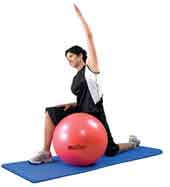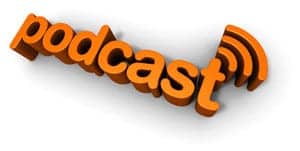In an effort to pinpoint an alternative to crunch exercises performed using an exercise machine, Danish researchers conducted a study comparing the muscle activation exhibited while performing abdominal crunches on a Thera-Band exercise ball with added elastic resistance, to those performed on an isotonic abdominal training machine. The study reportedly encompassed a total of 42 untrained adults, including 24 women and 18 men aged 28 to 67 years old.
Researchers asked participants to rate their low back pain, if applicable, during the 3 months using a 10-point Visual Analog Scale, with “0” signifying no pain and “10” the worst pain imaginable. The participants were then asked to perform ab-crunch exercises using elastic resistance on a Thera-Band exercise ball and an isotonic abdominal training machine.
During the study, researchers note that they compared muscle activation of core and thigh muscles during the exercises, estimating that they would locate no statistically significant EMG differences between the two. The results suggest that the Thera-Band exercise ball with Thera-Band elastic tubing crunch activated core muscles at a higher rate than the machine, exhibiting a greater activation of the abdominal muscles by 24%.
Less activation of the hip flexors by 160% was also reported during abdominal crunches performed using the exercise ball with elastic tubing. According to researchers, the 90-degree sitting position of the abdominal machine may promote activation of the hip flexors when compared to the neutral hip position exhibited using the exercise ball.
Researchers note that current data shows sitting crunches in an exercise machine do not target abdominal muscles to the same extent as the supine crunch on the exercise ball. Additionally, 90-degree sitting on the machine may not be ideal for all users, researchers say.
“Abdominal crunches performed on a exercise machine in a seated position may not be desirable for individuals with lumbar disk pathologies, low back pain, or weak abdominal musculature,” researchers explain.
Phil Page, PT, ATC, CSCS, FACSM, director of clinical education and research, Performance Health, comments on the study, noting that its findings ultimately “[allow] anyone with access to an exercise ball and elastic tubing to increase their abdominal strength, which may increase the stability of the spine, enhance an individual’s overall physical strength, and decrease the occurrence of lower back pain.”
[Source: Performance Health]






